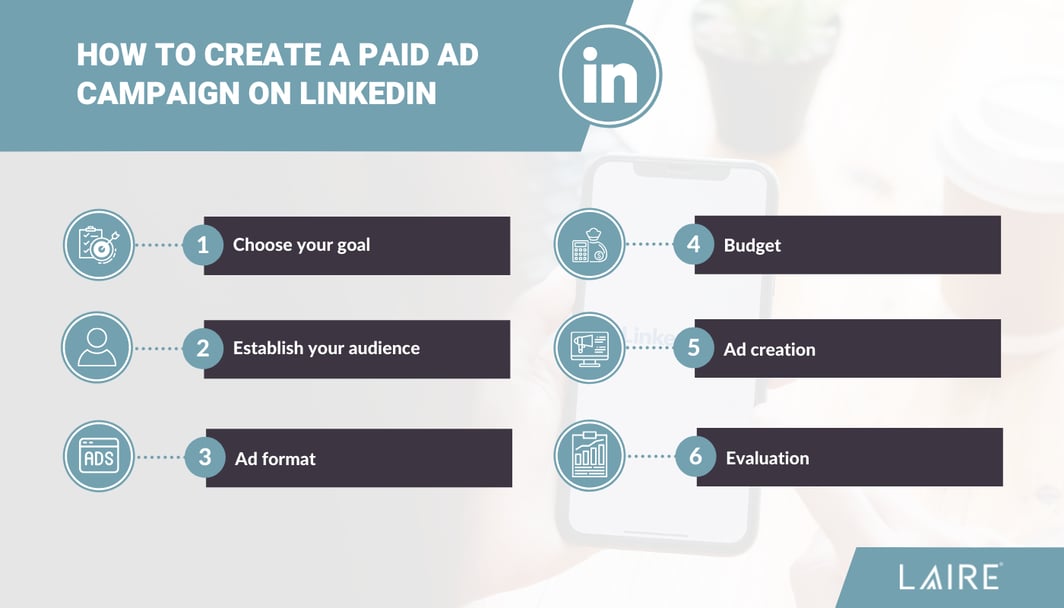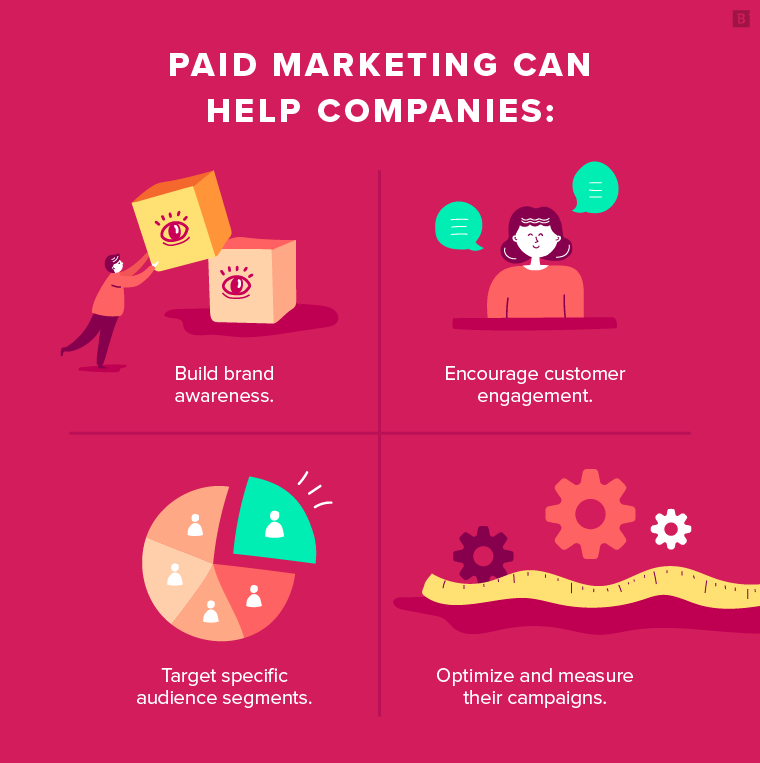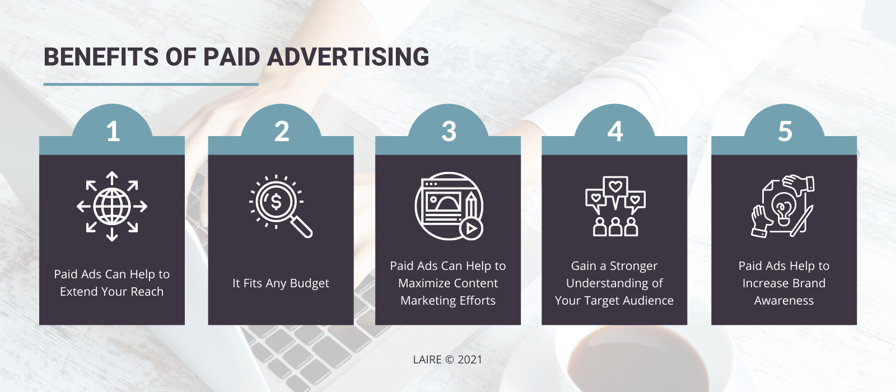Discover the top secrets to maximize ROI and drive conversions with our expert tips for successful paid advertising campaigns.

Image courtesy of via DALL-E 3
Table of Contents
Introduction to Paid Advertising
In today’s digital world, paid advertising plays a crucial role in helping businesses stand out and reach their target audience online. Paid advertising is all about companies paying to have their ads displayed on various platforms like websites, social media, or search engines. These ads aim to grab the attention of potential customers and drive them to take action, whether it’s making a purchase, signing up for a newsletter, or visiting a website.
What is Paid Advertising?
Paid advertising is like renting space in a crowded market to showcase your products or services. Just like how billboards grab attention on the highway, online ads strive to catch the eye of people scrolling through their favorite websites or social media platforms. Companies pay a fee each time someone clicks on their ad or based on how many times the ad is shown, helping them reach a wider audience and increase brand awareness.
Why Paid Advertising is Important
When it comes to online success, paid advertising offers a multitude of benefits. It helps businesses increase their visibility among potential customers, ensuring that their products or services are noticed in a sea of competitors. By targeting specific audiences based on their interests and behaviors, paid advertising also allows companies to reach the right people, boosting the chances of generating leads and driving sales. These ads act as virtual signposts, guiding users towards taking the actions that businesses desire.
Different Types of Paid Advertising
There are various types of paid advertising to explore, each with its unique way of captivating audiences. Pay-Per-Click (PPC) ads, for instance, only charge companies when someone clicks on their ad, making it a cost-effective way to drive traffic to a website. Social media ads, on the other hand, leverage the power of platforms like Facebook, Instagram, or Twitter to target specific demographics and engage users where they spend most of their time. Display ads, often seen on websites, use visuals and snappy messages to draw in potential customers and convey key brand messages.
Setting Clear Goals
Setting clear goals before embarking on a paid advertising campaign is like drawing a map to reach your destination. Just like you plan your route before a journey, having goals helps you know what you want to achieve with your ads. Whether it’s increasing visitors to your website, getting more people to buy your products, or simply boosting your brand’s visibility, having clear goals is essential for a successful campaign.
Types of Advertising Goals
There are different types of goals you can set for your advertising campaign. You might want to increase brand awareness, which means making more people familiar with your brand. Or maybe you’re aiming to generate leads, which are potential customers interested in your products. And of course, the ultimate goal for many campaigns is driving sales – getting people to buy what you’re offering. By defining your specific goal, you can tailor your ads and strategies to achieve it effectively.
How to Measure Success
Once you’ve set your goals, it’s important to track your progress to see if you’re getting closer to achieving them. Metrics like clicks, impressions, and conversions can help you measure the success of your campaign. For example, if your goal is to increase website visits, you can track the number of clicks your ad generates. If you’re aiming for more sales, you can monitor how many people actually make a purchase after seeing your ad. By analyzing these metrics, you can tell if your campaign is on the right track or if you need to adjust your strategies to reach your goals.
Choosing the Right Platform
When it comes to running a successful paid advertising campaign, choosing the right platform is crucial. Different platforms offer unique features and audiences, so selecting the one that aligns best with your goals is essential for achieving success.

Image courtesy of www.lairedigital.com via Google Images
Popular Platforms
There are various platforms where you can run paid advertising campaigns, such as Google, Facebook, and Instagram. Google Ads allow you to display ads on search engine results, while Facebook and Instagram cater to social media users. Each platform has its strengths and target audiences, so it’s important to understand how they work before deciding where to invest your advertising dollars.
Matching Platform to Goals
It’s important to match the platform to your advertising goals. For example, if your goal is to increase brand awareness among a younger audience, Instagram might be the ideal platform for you. On the other hand, if you’re looking to drive immediate sales, Google Ads, with their targeted search engine placements, could be more effective. Understanding your goals and the strengths of each platform will help you make an informed decision.
Budget Considerations
Each advertising platform operates on a different pricing model, which can impact your overall budget. Google Ads, for instance, operates on a pay-per-click basis, while Facebook Ads may charge based on impressions or clicks. It’s crucial to consider your budget and choose a platform that not only fits within your financial constraints but also offers the best value for your investment.
Creating Engaging Ad Content
When it comes to paid advertising, creating content that captivates your audience is key to a successful campaign. Here are some tips on how to craft engaging ad content that grabs attention and drives results.
Writing Compelling Ad Copy
Writing compelling ad copy is all about getting your message across in a concise and impactful way. Keep your sentences short and to the point, using catchy phrases that spark curiosity. For example, instead of saying “Buy now,” you could try “Don’t miss out – grab yours today!” Remember, the goal is to pique interest and entice the viewer to learn more about your product or service.
Using Eye-Catching Visuals
Visuals play a crucial role in grabbing the viewer’s attention and making your ad stand out. Whether it’s a vibrant image or a captivating video, visuals can convey your message in a more compelling way than text alone. Make sure your visuals are high-quality, relevant to your message, and align with your brand’s style and tone.
Call to Action
A call to action (CTA) is a powerful tool that tells the viewer what action you want them to take next. Whether it’s signing up for a newsletter, visiting your website, or making a purchase, a clear and specific CTA can guide the viewer towards the next step in the customer journey. Make sure your CTA stands out, is easy to understand, and creates a sense of urgency.
Targeting the Right Audience
When it comes to paid advertising, one of the most critical aspects is targeting the right audience. Your audience is the group of people who are most likely to be interested in your products or services. Let’s explore how you can identify and reach the right audience for your ads.

Image courtesy of www.brafton.com via Google Images
Understanding Your Audience
Before you can target the right audience, you need to understand who they are. Think about the people who would be most interested in what you have to offer. Consider their age, gender, interests, and needs. By knowing your audience, you can create ads that speak directly to them and are more likely to resonate.
Using Audience Insights
There are tools available that can provide valuable insights into your target audience. These tools can tell you what your audience likes, what websites they visit, and even what their online shopping habits are. By using this information, you can tailor your ads to match their preferences and behaviors, increasing the likelihood of a positive response.
Creating Audience Segments
Not all audiences are the same, so it’s essential to create different segments based on specific criteria. By dividing your audience into groups, you can create ads that are tailored to each segment’s unique characteristics. For example, you might have one ad for younger audiences and another for older demographics. This way, you can deliver more targeted and relevant content to each group.
Setting a Budget and Bidding Strategy
When you’re thinking about running ads online, the first thing you need to consider is how much money you’re willing to spend. Even if your budget is small, you can still make it work for you. Start by deciding how much you can afford to invest in your advertising efforts.
Types of Bidding Strategies
Once you’ve set your budget, you need to understand how bidding works. Bidding is when you decide how much you’re willing to pay for each person who clicks on your ad (cost-per-click or CPC) or sees it a thousand times (cost-per-impression or CPM). These strategies help you control your costs and reach your target audience effectively.
Optimizing Spend
After you’ve started running your ads, it’s essential to keep an eye on how they’re performing. You can optimize your spend by adjusting your bids based on what’s working best. Test different strategies and see which ones give you the best results. This way, you can make sure you’re getting the most out of every dollar you spend.
Monitoring and Adjusting Campaigns
In the world of paid advertising, it’s not just about setting up your campaigns and letting them run. Monitoring and adjusting your campaigns are crucial steps to ensure their success. By keeping an eye on how your ads are performing and making necessary changes, you can optimize your results and get the most out of your advertising budget.

Image courtesy of www.linkedin.com via Google Images
Tracking Ad Performance
One of the first steps in monitoring your campaigns is tracking how well your ads are doing. Using simple tools provided by advertising platforms, you can see key metrics like clicks, views, and engagement. By regularly checking these metrics, you can identify which ads are performing well and which ones may need some tweaking.
Making Adjustments
If you notice that certain ads are not delivering the results you expected, it’s time to make adjustments. This could involve changing your ad copy, images, targeting criteria, or even your bidding strategy. By being proactive and making changes to underperforming ads, you can improve their effectiveness and increase your chances of success.
Testing New Ideas
Don’t be afraid to experiment with new ideas and strategies. Trying out different ad creatives, messaging, or targeting options can help you discover what resonates best with your audience. By testing new ideas and analyzing the results, you can continuously optimize your campaigns and drive better performance.
Remember, monitoring and adjusting your campaigns is an ongoing process. By staying vigilant, being willing to make changes, and testing new ideas, you can ensure that your paid advertising efforts are effective and successful.
Measuring Success
When you run a paid advertising campaign, it’s important to understand how to measure its success. This will help you know if your ads are reaching the right people and if they’re helping you achieve your goals. Let’s dive into how you can track the performance of your campaigns and analyze the results to make informed decisions.
Key Metrics to Watch
There are several key metrics you should keep an eye on to measure the success of your paid advertising campaigns. One important metric is Return on Investment (ROI), which tells you how much money you’re making compared to how much you’re spending on ads. Another crucial metric is Click-Through Rate (CTR), which shows the percentage of people who clicked on your ad after seeing it. Lastly, Conversion Rate is essential as it tells you the percentage of people who took the desired action, like making a purchase, after clicking on your ad.
Analyzing Results
After running your ads, it’s essential to analyze the data you’ve collected to understand what’s working well and what isn’t. Look at the metrics mentioned earlier to see which ads are performing best and driving the most value for your business. By analyzing the results, you can make informed decisions on where to allocate more of your budget and optimize your campaigns for better outcomes.
Learning from Mistakes
It’s important to understand that mistakes are a natural part of running advertising campaigns. Don’t be discouraged if some of your ads don’t perform as expected. Instead, use these setbacks as learning opportunities to improve your future campaigns. By learning from your mistakes and continuously testing new ideas, you can refine your strategies and increase the success of your paid advertising efforts over time.
Conclusion and Summary
In this blog post, we covered essential tips for successful paid advertising campaigns. Let’s quickly summarize the key points discussed throughout the article:

Image courtesy of www.lairedigital.com via Google Images
Recap of Key Points
We started by defining paid advertising and why it is crucial for online success. We explored the importance of setting clear goals before launching a campaign and how these goals help measure success. Next, we discussed the significance of choosing the right platform that aligns with your campaign objectives and budget considerations. Moving on, we emphasized the importance of creating engaging ad content with compelling copy, captivating visuals, and effective calls to action. Additionally, we highlighted the significance of accurately targeting the right audience based on demographics, interests, and behaviors. We also delved into the process of setting a budget and bidding strategy to maximize the campaign’s effectiveness. Furthermore, we emphasized the importance of monitoring and adjusting campaigns regularly to optimize performance. Finally, we discussed the measuring success aspect, focusing on key metrics, analyzing results, and learning from mistakes.
Final Thoughts
Implementing these tips can significantly enhance the success of your advertising campaigns. By setting clear goals, targeting the right audience, creating engaging content, managing your budget effectively, and continuously monitoring and adjusting your campaigns, you are on the right path to achieving your advertising objectives. Remember, learning from any mistakes and data analysis can lead to improvements in future campaigns. Stay persistent, be creative, and adapt to the ever-changing digital landscape to maximize the impact of your paid advertising efforts. Good luck!
Want to turn these SEO insights into real results? Seorocket is an all-in-one AI SEO solution that uses the power of AI to analyze your competition and craft high-ranking content.
Seorocket offers a suite of powerful tools, including a Keyword Researcher to find the most profitable keywords, an AI Writer to generate unique and Google-friendly content, and an Automatic Publisher to schedule and publish your content directly to your website. Plus, you’ll get real-time performance tracking so you can see exactly what’s working and make adjustments as needed.
Stop just reading about SEO – take action with Seorocket and skyrocket your search rankings today. Sign up for a free trial and see the difference Seorocket can make for your website!
Frequently Asked Questions (FAQs)
What is a PPC ad?
A PPC ad, which stands for Pay-Per-Click, is an advertisement that you pay for only when someone clicks on it. It’s like paying for the ad only when someone shows interest by clicking on it.
How do I choose the right platform?
To choose the right platform for your ad, think about where your audience spends their time. If they’re on social media a lot, platforms like Facebook or Instagram might be a good fit. If they often search for things online, Google could be a great option. Knowing your audience helps you pick the best platform for your ad.
What is a good budget to start with?
When you’re just starting with paid advertising, it’s a good idea to begin with a small budget. This way, you can test different ad strategies and see what works best for your goals. As you learn more about what resonates with your audience, you can gradually increase your budget to reach more people and drive better results.







